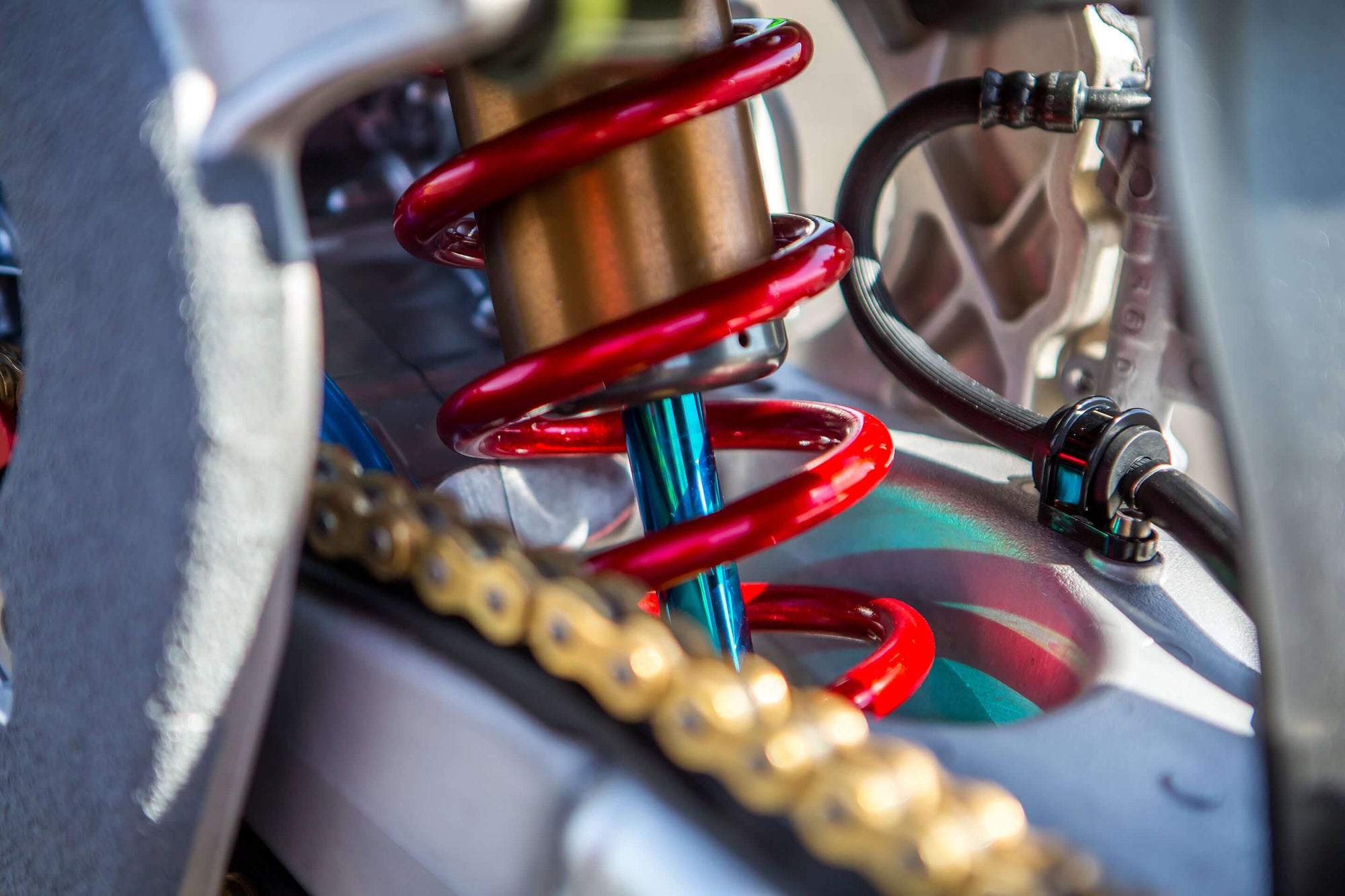I see so many riders that think setting sag is a set it and forget it proposition, that you just set it when you get a new bike and never look back. In fact, sag should be checked regularly, and just as important, adjusted for different conditions to make sure your bike is safe, predictable and fun to ride. This adjustment is especially important for ADV and sport touring bikes as the loads change so often and with ADV bikes switching from street to off-road and fast, open terrain to tight, technical trails.
For stability at speed it helps to have less rake on the forks (make the fork angle looser) and for tighter conditions it helps to add more rake (make the fork angle steeper) so the bike steers better. A lot of riders try to make this adjustment by raising and lowering the forks in the triple clamps to affect the fork rake but this is the wrong way to look at it. By changing the fork tube height you end up throwing the bike's geometry off and the chassis out of balance. The only time I make an adjustment to the fork tube height is if the manufacturer or a professional suspension tuner recommends it based on extensive testing on that specific bike. It is always best make this adjustment at the rear of the bike by adjusting the sag, that way you do not change the geometry or balance of the chassis, just the way the bike sits in the rear.
For faster conditions I will run more sag which will produce less rake in the fork and make the bike more stable at speed but it will not turn as well and the front end will tend to push in tight corners. I find that more sag is also a good way to go in deep sand to provide a looser rake and keep the bike stable and get more weight on the rear tire for traction.
For tighter conditions, I will run less sag which will provide a steeper rake in the fork and make the bike turn sharper but the bike will be unstable experience head shake at speed.
By taking the time to check sag regularly and try some different settings you can find the perfect balance so your bike handles everything well and is safe and predictable. Using a purpose sag built tool like the Slacker Digital Sag Scale makes it fast and easy but even if you just get a buddy and a tape measure, you will be amazed how much better your bike can be by taking time to check your sag make this simple adjustment.



